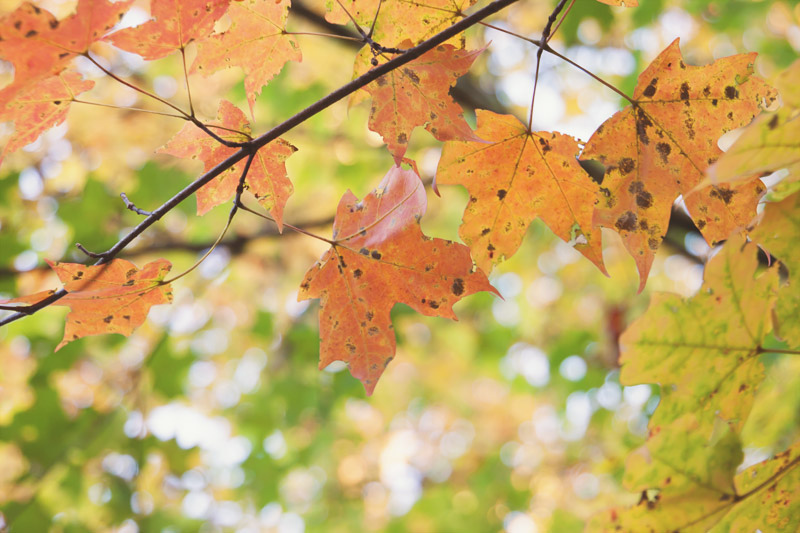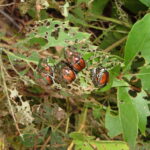
Most homeowners choose to do their lawn care and renovation in the spring, but actually works out much better if it’s done in the fall after the summer’s heat and drought have passed. During the fall, the mixture of cool air temperatures and warm soil is the perfect recipe for seed germination for the Chicago, IL homeowner, whereas during the spring cool soil and chilly air are less favorable conditions. Not to mention that weeds, such as dandelions, are less aggressive in the fall compared to the spring, when they compete with grass seedlings.
Fall is a great time to evaluate your lawn. Before you put chemicals on your lawn or sow new seed or anything else, ask yourself (or your lawn care provider) why your lawn isn’t well or how it could improve. Things to consider are grubs, shade, compacted soil, brown patches and so on. The root of the problem should be addressed before just throwing new seed on the ground. If overall your lawn’s conditions are generally good but you have a few rough spots that are thinning or becoming subject to a weed invasion, it may be time to renovate.
But other than renovating completely there are a few things that proactive homeowners do to keep their lawn healthy during the fall. Follow the general tips below for optimal fall lawn care and maintenance.
Photo: Flickr / Mark Turnauckas
1. Use fallen leaves to your advantage
If your property has a lot of trees and the seasonal fall comes along with a lot of fallen leaves, you can actually use the leaves to your advantage and recycle the nutrients back into your lawn or flower beds. Depending on the amount of leaves your property accumulates will dictate what your best options are. You could always simply rake them up and bag them every time they fall if you’re not over burdened with them. Or you might want to add them to a compost pile that the bottom of the pile can be used as an organic fertilizer. If you’re really on top of your lawn care game it may be worth it to continue mowing on a weekly basis using a mulching blower to grind up the leaves and spit them back into the lawn, once again as a natural fertilizer. The underlying importance of removing the leaves from the lawn’s surface is because too many leaves can suffocate your grass and not allow optimal amounts of water, air, and nutrients to get down to the roots.
2. Winterize your sprinkler system
Depending on this fall’s weather and your type of grass, it may still be necessary to continue watering your lawn during the fall. Cool-season grasses grow tend to thrive in regions where the fall weather is cooler or wetter. And everyone knows we get plenty of rain here in Chicago during the fall. So they may not actually need additional watering and irrigation during the fall because a lot of cool-season grasses are still growing or even at their peak growth rate. Once winter hits warm-season grasses go into winter dormancy periods and their growth rate tends to decline during the fall. Most likely, they won’t need nearly as much water during the fall as they do during the summer. In any case make sure to winterize your sprinkler system and adjust according to your grass type.
3. Aeration and overseeding
Cool-season grasses prefer to be aerated in the fall while the air is cool and the soil is still warm from the summer heat. The earlier in the fall the better so it’s a good idea to set aside this task for a month like September every year. Aeration is the process of removing small plugs of soil from your lawn, which reduces soil compaction and allows optimal amounts of air, nutrients, and water to reach the root system over the next year. Most lawn care professionals in the industry recommend coupling aeration and overseeding as it’s much easier for the seed to germinate when the soil is nice and loose. Warm-season grasses are typically aerated in the late spring or early summer.
4. Your lawn might be hungry
Fall is prime time to fertilize cool-season grass types. However, because warm-season grass types are on their way to winter dormancy, usually only require a small dose of nitrogen to carry them through the winter time. Whereas cool-season grasses are going to want the full dosage of nitrogen and whichever other nutrients your lawn is lacking, according to your soil test. The exact amounts of fertilizer which should be applied will be revealed by your soil test or by the instructions on the packaging of the fertilizer. Either way, just keep the weeds at bay. Remember that the best weed control is a healthy lawn to begin with.
5. Best mowing practices
Depending on the type of cool-season grass you have you may be able to get away mowing once every two weeks, but if you want to minimize the amount of leaves on your lawn then mowing weekly may be the answer. Regardless of the grass type your lawn is made up of, never cut off more than ⅓ of the grass blade at a time. If you cut more than the recommended amount you run the risk of scalping your lawn. Warm-season grasses will soon become dormant and may not need as much attention during these months.
That’s it for our five fall lawn care tips. Follow these and we guarantee you’ll see better results if you weren’t already following the guidelines above. Have questions about lawn care in Chicago, IL? Share with us your thoughts in the comments section below.




![9 Best Leaf Blowers of 2024 [Reviews]](https://www.lawnstarter.com/blog/wp-content/plugins/related-posts/static/thumbs/16.jpg)



